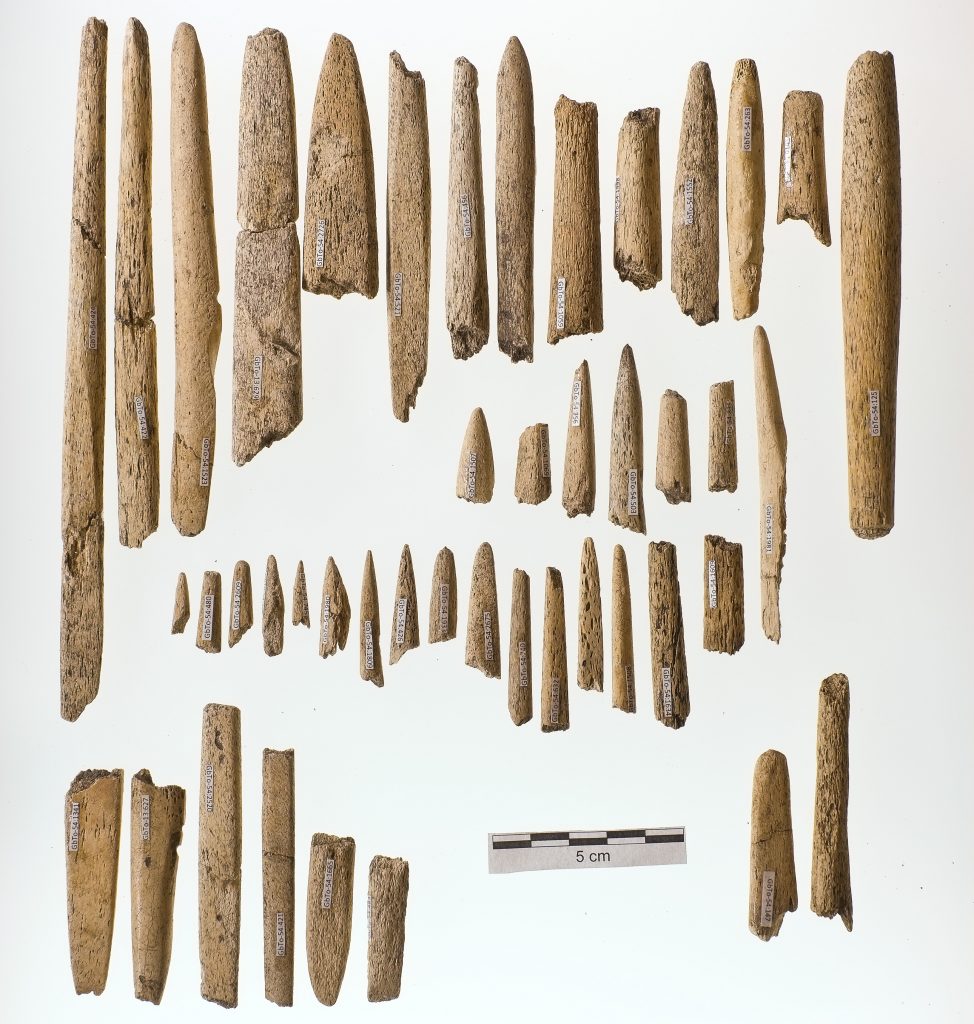Wedge Based Whalebone Rod Harpoon Points

Here is a short entry to round out our harpoon sequence. Next week we’ll bring you the 3-D distribution of the different harpoon types with some really amazing graphics and some notes on what we’ve learned from looking for patterns in where we found the different types.

These artifact are amazing, and so clearly “North Coast”; we really never see anything quite like them on the South Coast. The top two show the range of variation and the large size – originally they were probably 30 cm long and more! The top one is the near-complete typical version. They have a flattened, wedge base (on the left) to insert in a spear or harpoon shaft, and the other end is round in cross-section and tapers to a point. The bottom one is a little different, but is just beautifully shaped and probably worked a little differently. It is round at what I think is the bottom end, while the other end gradually changes to a flattened oval cross-section, with the width flaring to accommodate the flattening without loosing strength. Its a visually pleasing object and we had hoped to show a 3-D model of it; but we don’t have one to show right now.
Why do we think these are harpoons at all? Others (e.g., G. MacDonald and K. Ames) have suggested similar tools might be lances or harpoon foreshafts. Some might well be foreshafts (and in our last blog entry there is a link to Elfshot’s photo of a recreated Eastern Archaic harpoon from eastern Canada: and note the whalebone foreshaft). But a couple of the Prince Rupert bone rods have remnants of clear barbs, showing that they were themselves harpoon heads (or lance heads intended to stay in the animal after piercing it). On the image here, can you see the bone spur that sticks out at the right at the bottom? That is a barb, made by sawing away material from both sides. This one broke right where it had been weakened by that sawing.
It seems the whalebone (or other large sea mammal) was particularly well suited to the needs of sea mammal hunting. Sea mammal bone is very porous and ‘springy’ compared to the denser and perhaps more brittle land mammal bones; and few land mammal bones are large enough to make rods of this size. Ames (2005) also noted this suitability in the 1960s-70s Prince Rupert excavated artifacts, but he found rods made of antler (which is similarly porous and springy) and, occasionally, land mammal.

Take the time to check the artifacts. These are the most plentiful harpoon type in the 2012-13 excavations Millennia directed at Prince Rupert. But there are lots of other types of bone points, which we’ll show in future.
